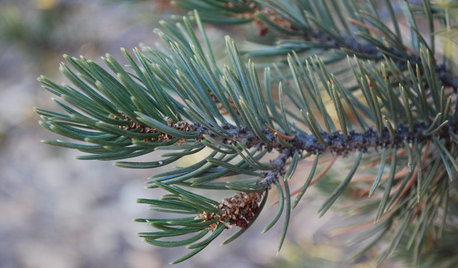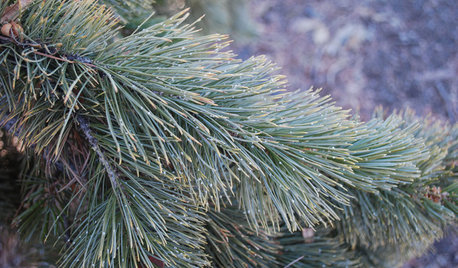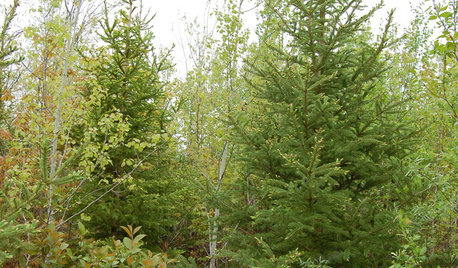Pine Cones to Condition Clay Soil?
crystal_s
12 years ago
Related Stories

GARDENING GUIDESGardening Solutions for Heavy Clay Soils
What’s a gardener to do with soil that’s easily compacted and has poor drainage? Find out here
Full Story
GARDENING GUIDESHow to Stop Worrying and Start Loving Clay Soil
Clay has many more benefits than you might imagine
Full Story
GARDENING GUIDESHave Acidic Soil in Your Yard? Learn to Love Gardening Anyway
Look to acid-loving plants, like conifers and rhododendrons, to help your low-pH garden thrive
Full Story
GARDENING GUIDES10 Solutions for Soggy Soil
If a too-wet garden is raining on your parade, try these water-loving plants and other ideas for handling all of that H2O
Full Story
GARDENING GUIDES9 Clay-Busting Native Flowers for Summer Sun
These plants survive and even thrive in tough clay soil east of the Rocky Mountains
Full Story
TREESGreat Design Plant: Pinyon Pine
You might just go nuts for this tough evergreen native to the Western U.S.
Full Story
GARDENING GUIDESGreat Design Plant: Rocky Mountain Bristlecone Pine
Try this drought-tolerant small evergreen for its sculptural beauty and slow-growing nature
Full Story
GARDENING GUIDESGreat Design Plant: Picea Glauca
Its sculptural form and evergreen foliage provide year-round beauty and wildlife shelter. Its cones offer important winter songbird food
Full Story
GROUND COVERSGround Force: 10 Top Ground Covers for Your Garden
Protect your soil from weeds and drought this summer with a living mulch of ground covers
Full Story
GARDENING GUIDESNew Ways to Think About All That Mulch in the Garden
Before you go making a mountain out of a mulch hill, learn the facts about what your plants and soil really want
Full StorySponsored
Columbus Area's Luxury Design Build Firm | 17x Best of Houzz Winner!
More Discussions








User
crystal_sOriginal Author
Related Professionals
Cottonwood Landscape Architects & Landscape Designers · Folsom Landscape Architects & Landscape Designers · Rossville Landscape Architects & Landscape Designers · Addison Landscape Contractors · Alamo Landscape Contractors · Clark Landscape Contractors · Crystal Landscape Contractors · Dunwoody Landscape Contractors · East Lake-Orient Park Landscape Contractors · Fort Worth Landscape Contractors · La Verne Landscape Contractors · Olympia Landscape Contractors · Wallingford Landscape Contractors · Merrifield Landscape Contractors · Grandview Decks, Patios & Outdoor Enclosuresdavemichigan
Kimmsr
goren
crystal_sOriginal Author
Kimmsr
feijoas
luckygal
crystal_sOriginal Author
Kimmsr
luckygal
jolj
stodgord488
jolj
gardengal48 (PNW Z8/9)